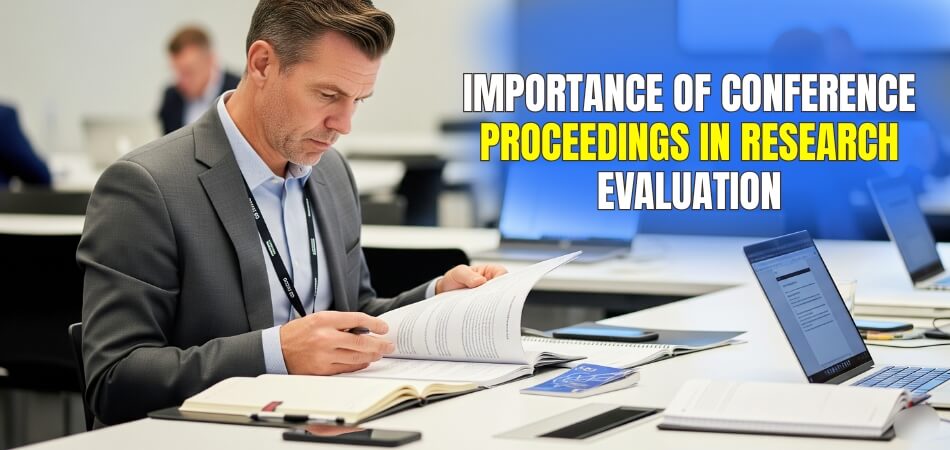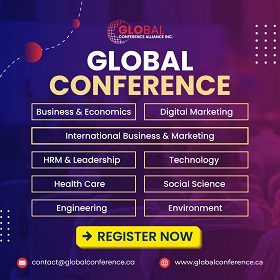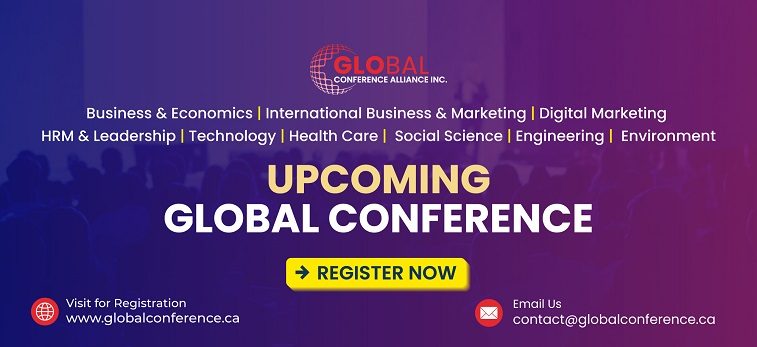The proceedings of conferences are often overlooked after major events, but their value extends much further. They act as a snapshot of current research and help share new ideas faster than journals. If you’re wondering how all this affects real academic work, you might already be thinking about the importance of conference proceedings in research evaluation.
Conference proceedings help researchers share early ideas, get feedback, and build networks. They provide public records, increase citations, and show research quality. In fields like Computer Science, top conferences often hold more value than journals in evaluations.
If this topic caught your interest, you’re not alone. Many people want to know how these papers shape academic value. You’ll find everything explained clearly in this article, including why conferences matter so much in the research world.
Importance of Conference Proceedings in Research Evaluation
Conference proceedings are very important in research, especially in science and technology. They help researchers share their new work with others in a fast way. Many people read these papers before they become full journal articles. These events also allow researchers to meet, learn, and improve their studies.
Early Platform for New Research
Researchers often present early ideas at conferences before publishing full papers. This helps them show their new work quickly and get attention early. In fast-moving fields like Computer Science, this matters a lot. Others can read the work and give their thoughts or ask questions. It gives a chance to fix issues before final publishing. Sharing ideas this early also builds trust in the work. Many important studies are first seen at conferences through such early platforms.
Formal Record and Wider Reach
Once a study is shared at a conference, it becomes part of the records. This means more people can read, cite, and share the findings globally. Even if a study isn’t in a journal yet, it’s still available. These records are official and can be used for other studies. People often find useful ideas in these records. Conference papers stay online and help future researchers. They reach wider groups than those who attended the event.
Valuable Peer Feedback
Every conference includes a question-and-answer time after a researcher presents. This part lets others give helpful tips or point out problems early. Sometimes these tips lead to big changes in the work. This makes the final version of the study much better. Feedback from experts helps new researchers grow. It also keeps the research clear and strong. Many times, this type of feedback is not possible with journals alone.
Opportunities for Collaboration
During and after presentations, researchers meet people who work on similar things. They often talk about their interests and share what they are doing. These talks sometimes lead to working together on new projects. Some even become co-authors for new research papers. Making friends in the same field helps researchers grow faster. Such teamwork improves research quality. Events like upcoming conferences in Canada and the USA are great places to start that kind of connection. These talks sometimes lead to working together on new projects.
Key Role in Research Evaluation
Different subjects use different ways to check how strong the research is. In Computer Science, conferences are often more important than journals. Systems like CORE or ERA rank conference papers to help with this. These systems show which conferences are trusted and well-known. A researcher with work in top-ranked conferences gets more value. These ranks help teachers and students understand research levels. Evaluation through conference work is very useful in many countries now.
Citation and Prestige Indicators
Some conferences have very famous names and respected speaker lists. Papers from these places are often cited by others around the world. This shows how useful and trusted the research is over time. The number of citations shows how far an idea has gone. Citation data gives proof that others are using the work. Many tools online track this information easily. Prestige helps researchers build better careers and reputations in their fields.
Visibility of Latest Trends
The newest ideas in science are often shared first at conferences. These papers show what people are working on right now. Researchers can learn what is changing in their field quickly. This helps them stay updated and not miss anything important. Students also benefit from reading these new ideas early. They know which topics are becoming popular. Knowing trends early gives a big advantage in planning new studies.
Contribution to Field Advancement
Papers shared at conferences often get better through peer review. Researchers improve their ideas with help from others at the event. This leads to stronger final versions in future journal publications. Many great discoveries began as short conference papers first. People also learn better ways to write and present ideas. This builds stronger research communities overall. Sharing often leads to better tools, theories, and knowledge across many subjects.
Conference proceedings help researchers share ideas quickly and get early support. They give chances for teamwork, questions, and better future research. Many good studies begin at conferences before going to journals. These events help science grow faster in easy and useful ways.
How Do Conference Proceedings Contribute to Academic Recognition?
Sharing your work at a conference is more than just talking. It becomes part of a bigger record that others can find and read later. This can help more people know your name and your work. Keep reading to see how this process helps build recognition over time.
Early Research Spotlight
Many researchers share their first ideas at conferences before turning them into journal papers. These early-stage findings can be small but meaningful, and being part of the proceedings lets others take notice. Reviewers, peers, and future collaborators often remember who introduced the topic first. A clear poster layout for conference displays can quietly make a strong impact as well. Every part helps build a stronger profile.
Citations and References
Other researchers may quote your work if they find it useful. Conference papers are often listed in online libraries and research databases. When people use your ideas, they usually mention your name in their writing. This gives credit and helps more people learn who you are. These citations also help your work look more serious. Getting even a few references shows others are reading what you shared.
Audience Reach
Even if people don’t attend the event, they can still read your paper. That’s because conference papers are saved and shared online afterward. More people can see your work, even from different countries or fields. This wider reach gives your work more chances to be used again. Many students and researchers find useful ideas just by reading these documents. Being part of that list can help your name spread faster.
Feedback and Improvement
After presenting, many speakers get useful comments or questions from others. These short talks can help find small mistakes or better ways to say things. Fixing these problems early can make your final work stronger. It also shows others that you are open to learning and improving. Some papers become much better after hearing what others think. Getting this help at the start can lead to better results later.
Building Your Name
Every time your name appears in a published paper, it adds value. People begin to connect your name with the topic you speak about. Over time, this helps others remember you for your work. Conference records stay online for years and are easy to find. Being part of these documents helps people trust your ideas more. Slowly, your name becomes part of the research community.
Being part of conference records helps others notice your research more easily. Even small efforts can lead to bigger recognition in the future. Every part, including visual work, supports how others see your name. Keep sharing your ideas and let the records build your place.
What Role Do Peer Reviews Play in Conference Proceedings?
Before a research paper is added to conference records, it usually goes through a check. This check is not just for spelling or grammar. It looks at the ideas, facts, and structure. Let’s look at why this checking process matters so much.
- Experts read the paper carefully to make sure the ideas are clear and correct.
- Peer reviews help remove weak parts that could confuse or mislead the audience.
- The process helps authors fix problems before their work becomes public at the event.
- Reviewers also check if the topic fits with what the conference wants to share.
- Good feedback can turn an average paper into something much stronger and clearer.
- Honest reviews also protect the event from sharing fake or copied research ideas.
- Authors feel more confident when their paper gets accepted after careful checking.
Peer reviews make sure only useful and real ideas are shared at events. This helps everyone trust the information they read in the records. Writers also get better through these helpful checks and suggestions. It’s all about making things stronger together.
How Do Visual Presentations Impact Research Evaluation in Conferences?
Research isn’t always about long papers filled with only words and numbers. Sometimes, a simple visual format can explain something faster and clearly than a full report. This is why many conferences include visual sessions. Let’s explore how these visuals can help with research evaluations.
Clearer Understanding
A visual helps explain hard topics in a way that makes sense quickly. Charts, diagrams, or step-by-step visuals can simplify complex data. In many technical fields, such as electrical engineering, conference presenters use visual formats. For instance, making a poster for an electrical engineering conference can improve visibility during evaluation sessions and strengthen the contribution’s presence in official proceedings.
Faster Communication
During busy events, it can take time to read a long talk or paper. Visual presentations help share the main idea quickly. This saves time for both the judges and the visitors. Good visuals also make it easier for people to remember what was shared. They don’t need to take too many notes or ask many questions to get the point.
Better Interaction
When people look at posters or slides, they often ask more questions. This leads to better conversations between the presenter and the audience. Visitors can point to parts of the display and get answers right away. It also allows presenters to explain things based on what the audience is looking at. These small talks help researchers share even more than what’s printed.
Strong First Impressions
First impressions matter at big events. A clean and well-organized visual display can catch someone’s attention faster than plain text. When a research idea is presented in a strong way, it can make the judges more interested. This may lead to better reviews or future project support. People often remember the way something looks, especially when it’s done with care and detail.
Adds to Evaluation
Reviewers don’t just listen to what’s said—they look at how it’s shown too. A visual that supports the main idea helps make the project stronger. It proves that the presenter understands their topic well. This is why many conferences treat visuals like a real part of the research. When used right, they can make a paper stand out and stay in people’s minds.
Visual presentations make research easier to understand and more fun to follow. They help researchers share ideas clearly, even in a short time or space. A simple poster or slide can sometimes say more than a report. Use visuals wisely—they leave a lasting mark.
What Are the Common Criteria for Evaluating Conference Publications?
Conference papers must meet certain rules if they are to be shared. These rules help reviewers know which papers are useful and worth showing. Every conference follows a few main points to judge the quality. Let’s look at the most common things they check and why they matter.
Novelty
A paper stands out when it shares something no one has said before. Reviewers check if the idea is new or just repeated work. A fresh idea can help others think in a new direction. New topics are more exciting for the audience and spark better questions. If the paper shares unique thinking, it’s seen as more valuable. This is often the first thing reviewers want to notice during the process.
Methodological Rigor
Research methods should always be explained clearly in a strong paper. Reviewers need to see that every step follows the correct rules. If the method is weak, the results may not be trusted. Every detail must be there, from the tools used to the tests done. The paper should make it easy for others to do the same thing. Clear methods help readers believe that the findings are real and solid.
Clarity
Ideas are not useful if no one can understand them well. A clear paper is easy to read and explains each point simply. The language must match the topic without being confusing or too long. Good writing helps others learn from the research and apply it. Charts or examples also support a better understanding for all readers. Reviewers always check if the message is easy to follow from start to end.
Impact
Sometimes a paper is strong not just now, but for years ahead. Reviewers try to guess how many people will use that work later. They look at how the idea can help others in real ways. If the paper answers a big question, its value grows. Ideas that lead to more studies also get higher marks. Even small studies can be important if they spark future work or action.
Peer Review Integrity
Before a paper gets accepted, it is checked by other experts. These people are not related to the writer and stay fair in the review. This step helps make sure the paper was not accepted by mistake. When the review is done well, it builds trust in the system. Reviewers make comments, ask for changes, or approve the work. The process stays fair and gives every writer the same chance.
Indexing & Ranking
After the paper is shared, it’s added to online research lists. These lists are used by schools, scientists, and others around the world. Being listed helps more people find and read the paper later. Some lists have more value, which makes the paper more respected. Reviewers check if the paper fits those top-level lists. Being ranked or indexed means the research can reach more people and grow.
Each rule helps decide if a paper is useful and worth reading. Reviewers want fair, clear, and strong research in every session. Even small things are checked before a paper gets accepted. These steps help the whole research event stay trusted and respected.
FAQs About the Importance of Conference Proceedings in Research Evaluation
There are many questions people have when learning about conference proceedings and their role in research. Some want to know how these papers are used, while others are curious about their long-term value. Below are answers to some common questions that haven’t been covered yet but are still very important to understand.
How Are Conference Proceedings Different From Seminar Papers?
Conference proceedings are published records of full research papers shared at major events. Seminar papers are often shorter, more informal, and shared within smaller groups. Proceedings usually go through a review process, while seminar papers might not. Because of this, conference papers often carry more academic value in research evaluation.
Can Conference Proceedings Be Used in School Research Projects?
Yes, they are often used by students and teachers in school-level research. These papers give clear examples of real studies and findings. They are helpful for learning how research is done and shared. Using them also teaches students how to use trusted academic sources.
Do All Conferences Publish Their Proceedings?
Not every conference publishes proceedings for public use. Some small events only offer slides or short notes to the audience. Big or well-known conferences often publish full papers that anyone can read online. Always check the event’s official website to know what they offer.
Are Conference Proceedings Only for Scientists?
No, they cover topics in many fields, not just science or technology. People in fields like history, art, education, and business also publish in proceedings. They are useful for sharing new ideas in any subject. Anyone doing research in any area can learn from them.
Can Conference Proceedings Be Updated Later?
Once they are published, they usually stay the same and are not edited. If a researcher wants to make changes, they must write a new version for a journal. That’s why writers try to fix all errors before the event. Still, many readers understand that these are early forms of research.
How Can I Tell If a Conference Proceeding Is Trusted?
Trusted proceedings usually come from events with a good history and a strong speaker list. They are often listed in major research databases or school libraries. You can also look at the review process—good conferences always review their papers. If many people have cited the papers, that’s also a good sign.
Are Conference Proceedings Helpful in Job Applications?
Yes, they can show that the applicant has shared research with others. Many employers like to see that you’ve been part of a research event. It proves that your work was accepted and reviewed by experts. It also shows good communication skills and active learning.
Do Conference Proceedings Count in Research Awards?
In many cases, they are accepted as proof of real research work. Some award groups and schools accept them if the event is well-known. If the paper was cited or ranked, that adds more value. Always check the award rules to be sure they allow conference work.
Can I Reuse My Conference Paper in a Journal?
Yes, but the journal must allow it, and you may need to change it. Many journals ask for longer, updated, or clearer versions of the paper. You should also mention that it was first shown at a conference. Reusing work is fine, but honesty is always important in research.
Last Words
Conference proceedings bring real value to the research world. They help share new ideas faster, improve study quality, and connect researchers globally. From early-stage work to final outcomes, these papers are key to understanding the importance of conference proceedings in research evaluation.
As you keep learning or writing, make sure your ideas are clear, honest, and ready to share. Use visuals wisely, accept feedback openly, and aim for strong topics. Stay curious, stay active, and best wishes as you grow in research.








